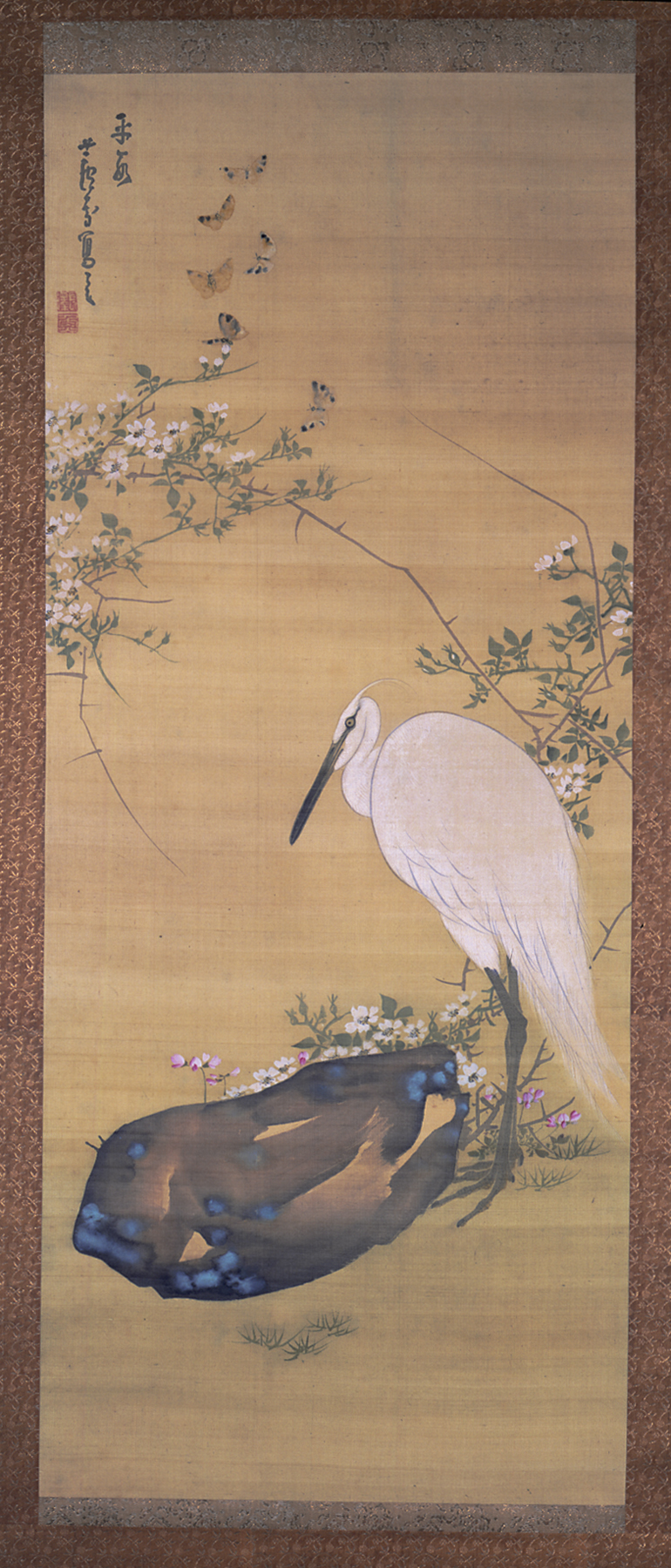Heron and Butterflies with Rock, unknown maker from Japan
Artwork Overview
Heron and Butterflies with Rock
, late 1700s, Edo period (1600–1868)
Where object was made: Japan
Material/technique: ink; silk; color
Dimensions:
Image Dimensions Height/Width (Height x Width): 98.5 x 40.5 cm
Image Dimensions Height/Width (Height x Width): 38 3/4 x 15 15/16 in
Mount Dimensions (Height x Width x Depth): 192.5 x 53.5 cm
Mount Dimensions (Height x Width x Depth): 75 13/16 x 21 1/16 in
Roller Dimensions (Width x Diameter): 58.8 x 2.5 cm
Roller Dimensions (Width x Diameter): 23 1/8 x 1 in
Image Dimensions Height/Width (Height x Width): 98.5 x 40.5 cm
Image Dimensions Height/Width (Height x Width): 38 3/4 x 15 15/16 in
Mount Dimensions (Height x Width x Depth): 192.5 x 53.5 cm
Mount Dimensions (Height x Width x Depth): 75 13/16 x 21 1/16 in
Roller Dimensions (Width x Diameter): 58.8 x 2.5 cm
Roller Dimensions (Width x Diameter): 23 1/8 x 1 in
Credit line: Museum purchase: Gift of Mr. and Mrs. Floyd T. Amsden
Accession number: 1975.0044
Not on display
If you wish to reproduce this image, please submit an image request


